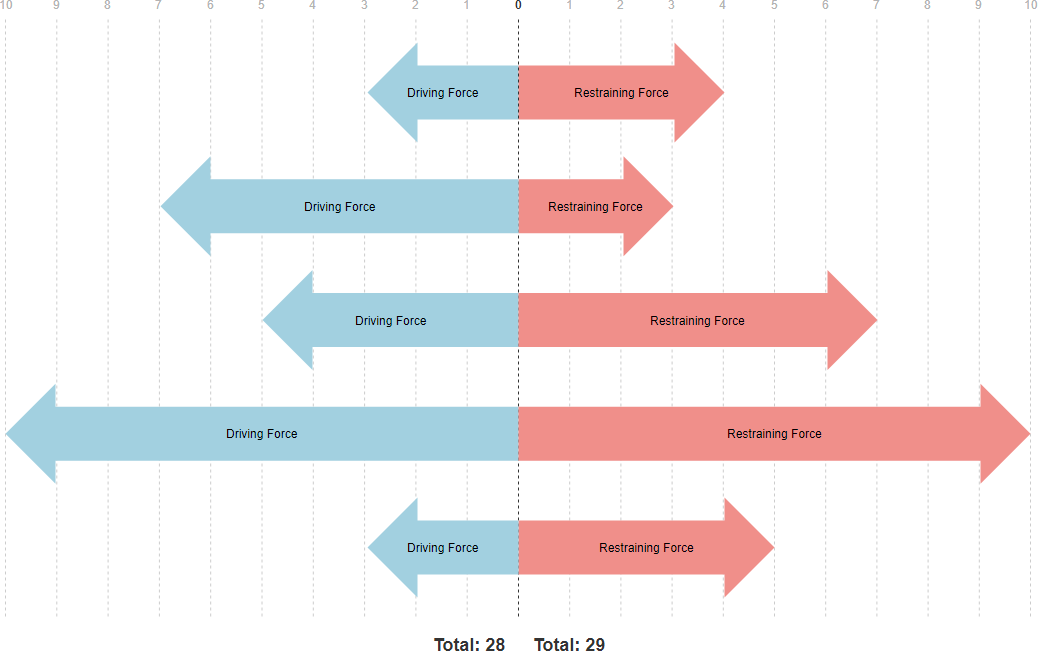Force Field Analysis (FFA), developed by Kurt Lewin (1951), is widely used to inform decision making, particularly in planning and implementing change management programs in organizations. It is a powerful method of gaining a comprehensive overview of the different forces acting on a potential organizational change issue, and for assessing their source and strength.
Force field analysis can clarify the ‘driving forces’ and identify obstacles or ‘restraining forces’ to change. As a result, it can help identify the relative priority of factors on each side of the issue. For bridging research and policy, it can be used to analyses the forces affecting a situation or to assess the forces affecting whether particular research might be adopted as policy. It might also be used to identify where research may help tip forces towards a change.
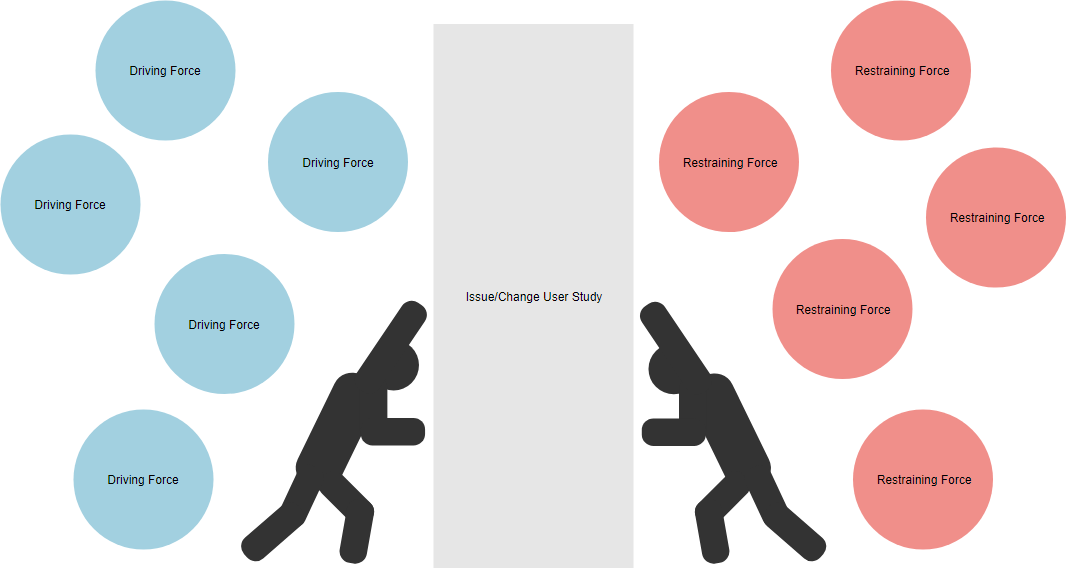
Edit this Force Field Analysis Diagram
How to Conduct a Force Field Analysis?
A force field analysis is typically carried out with a group using a flip chart.
Step 1: Describe your plan or proposal for change
- Firstly, the group discusses and agrees on the current situation and the goal of the policy or institutional change.
- This goal should be written on the chart or transparency between two columns.
- All the forces for change should then be listed in one column and all forces against change in the other column.
Step 2: List all forces for change in one column, and all forces against change in another column
- The next step is to brainstorm the ‘driving’ and ‘restraining’ forces and write them in the appropriate column.
- The ‘driving’ and ‘restraining’ forces should be sorted on common themes and/or prioritized according to their ‘magnitude’ towards change by assigning a score to each force, ranging from 1 (weak) to 5 (strong).
Step 3: Review the result and seek for a solution and action plan
- The last and the most important step is to discuss action strategies to reduce the ‘restraining’ forces and to capitalize on the ‘driving’ forces.
The resulting table might look like the following:
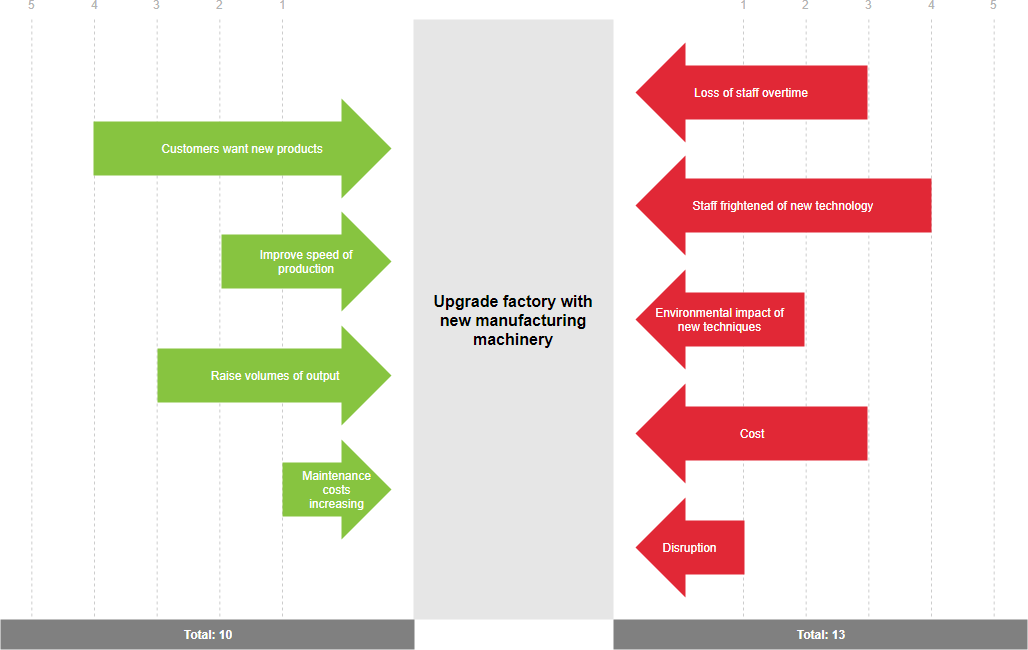
Edit this Force Field Analysis Example
Force Field Analysis Example
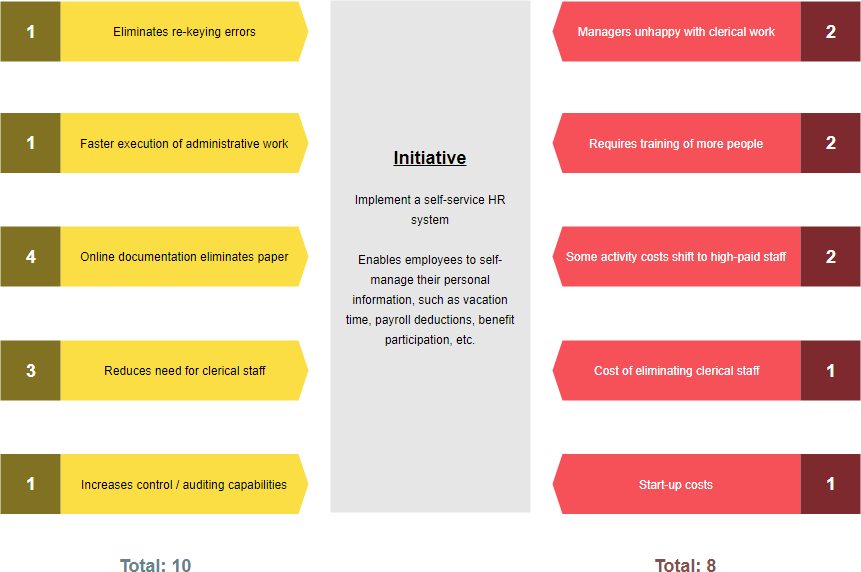
Force Field Analysis Templates
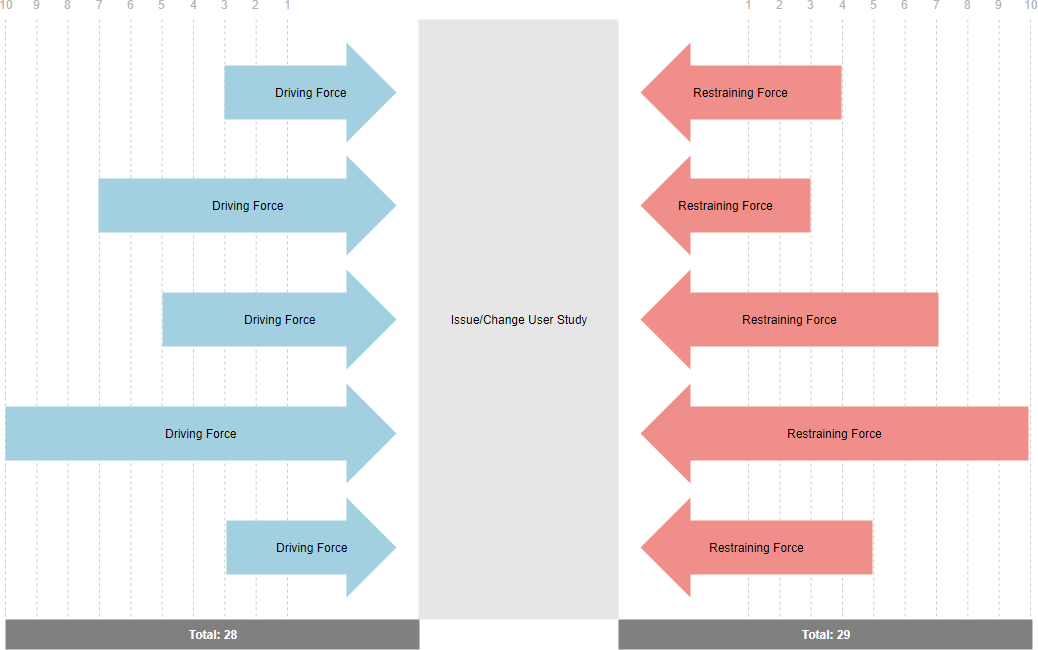
Edit this Force Field Analysis Template
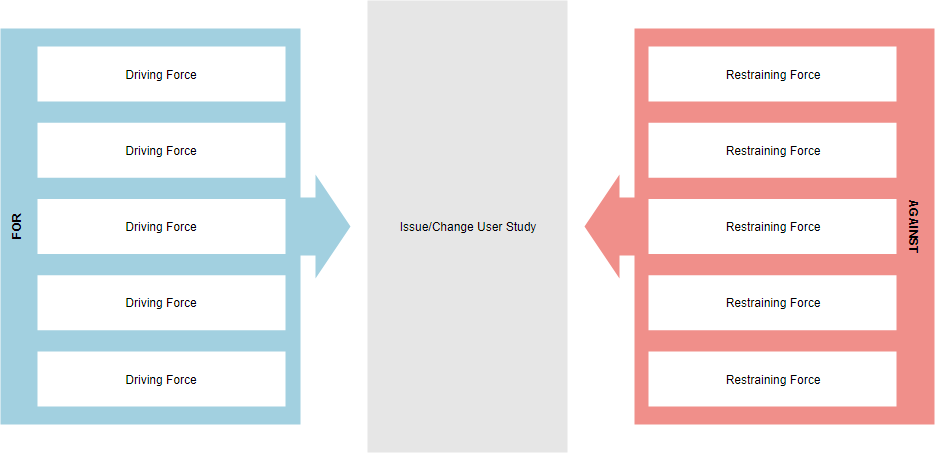
Edit this Force Field Model Template
